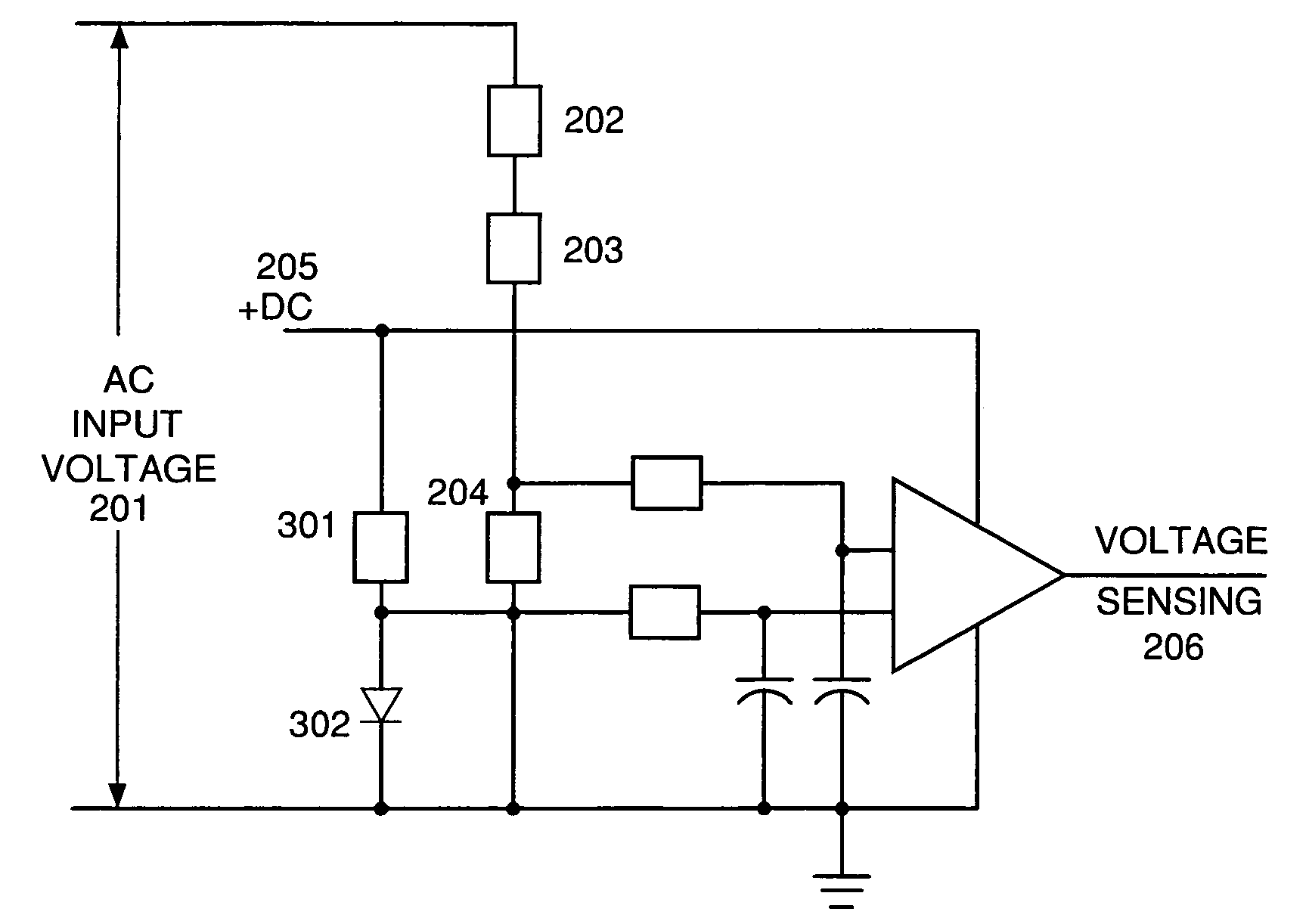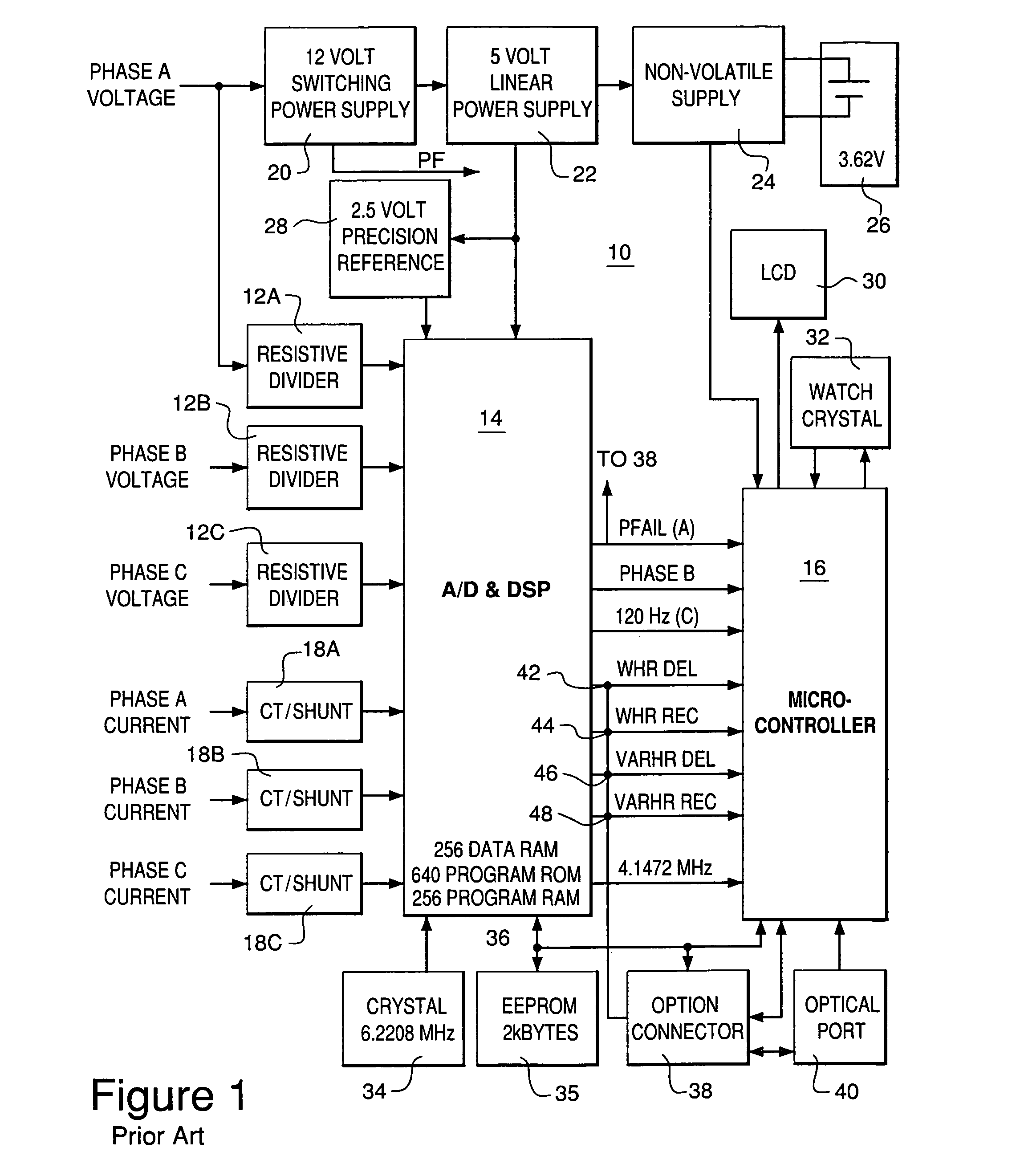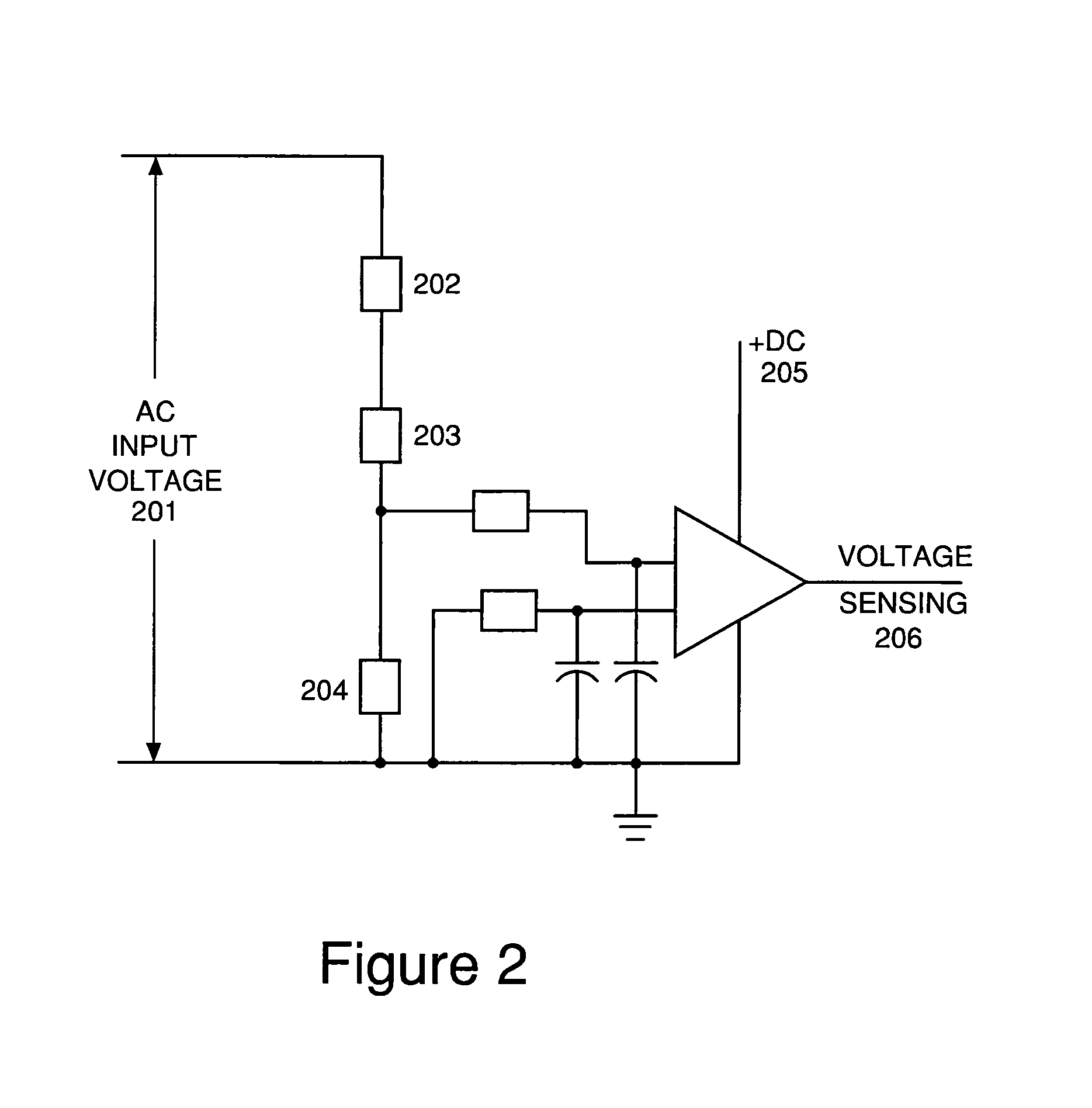Bias technique for electric utility meter
a technology of bias and electric utility meters, applied in the direction of instruments, measurement using ac-dc conversion, electric devices, etc., can solve the problem that the electric circuit often cannot use the voltage of the ac power lin
- Summary
- Abstract
- Description
- Claims
- Application Information
AI Technical Summary
Benefits of technology
Problems solved by technology
Method used
Image
Examples
Embodiment Construction
[0016]FIG. 1 is a block diagram of an electronic meter. As shown in FIG. 1, meter 10 is shown to include three resistive voltage divider networks 12A, 12B, 12C; a first processor—an ADC / DSP (analog-to-digital converter / digital signal processor) chip 14; a second processor—a microcontroller 16 which in the preferred embodiment is a Mitsubishi Model 50428 microcontroller; three current sensors 18A, 18B, 18C; a 12 V switching power supply 20 that is capable of receiving inputs in the range of 96-528 V; a 5 V linear power supply 22; a nonvolatile power supply 24 that switches to a battery 26 when 5 V supply 22 is inoperative; a 2.5 V precision voltage reference 28; a liquid crystal display (LCD) 30; a 32.768 kHz oscillator 32; a 6.2208 MHz oscillator 34 that provides timing signals to chip 14 and whose signal is divided by 1.5 to provide a 4.1472 MHz clock signal to microcontroller 16; a 2 kByte EEPROM 35; a serial communications line 36; an option connector 38; and an optical communica...
PUM
 Login to View More
Login to View More Abstract
Description
Claims
Application Information
 Login to View More
Login to View More - R&D
- Intellectual Property
- Life Sciences
- Materials
- Tech Scout
- Unparalleled Data Quality
- Higher Quality Content
- 60% Fewer Hallucinations
Browse by: Latest US Patents, China's latest patents, Technical Efficacy Thesaurus, Application Domain, Technology Topic, Popular Technical Reports.
© 2025 PatSnap. All rights reserved.Legal|Privacy policy|Modern Slavery Act Transparency Statement|Sitemap|About US| Contact US: help@patsnap.com



